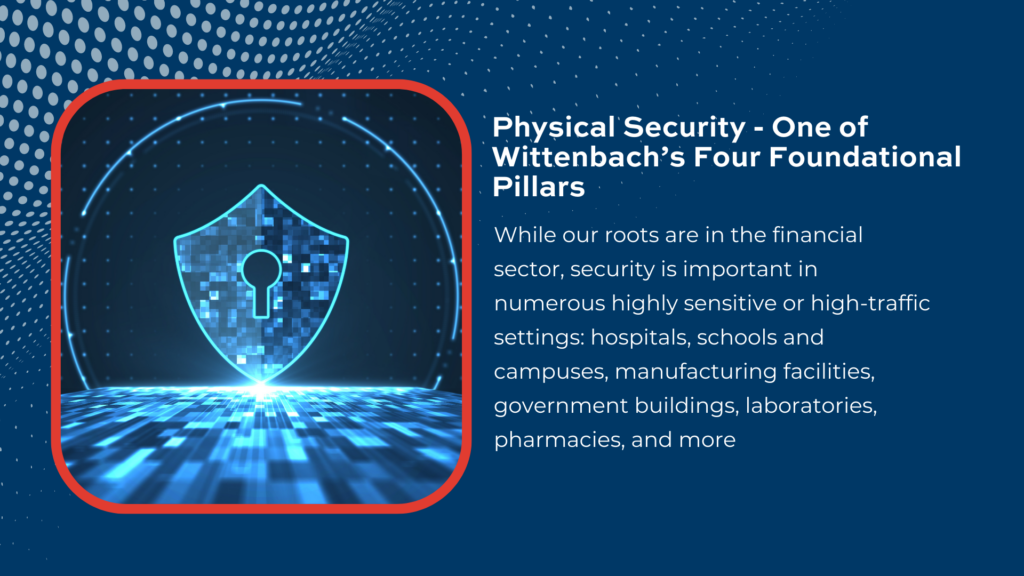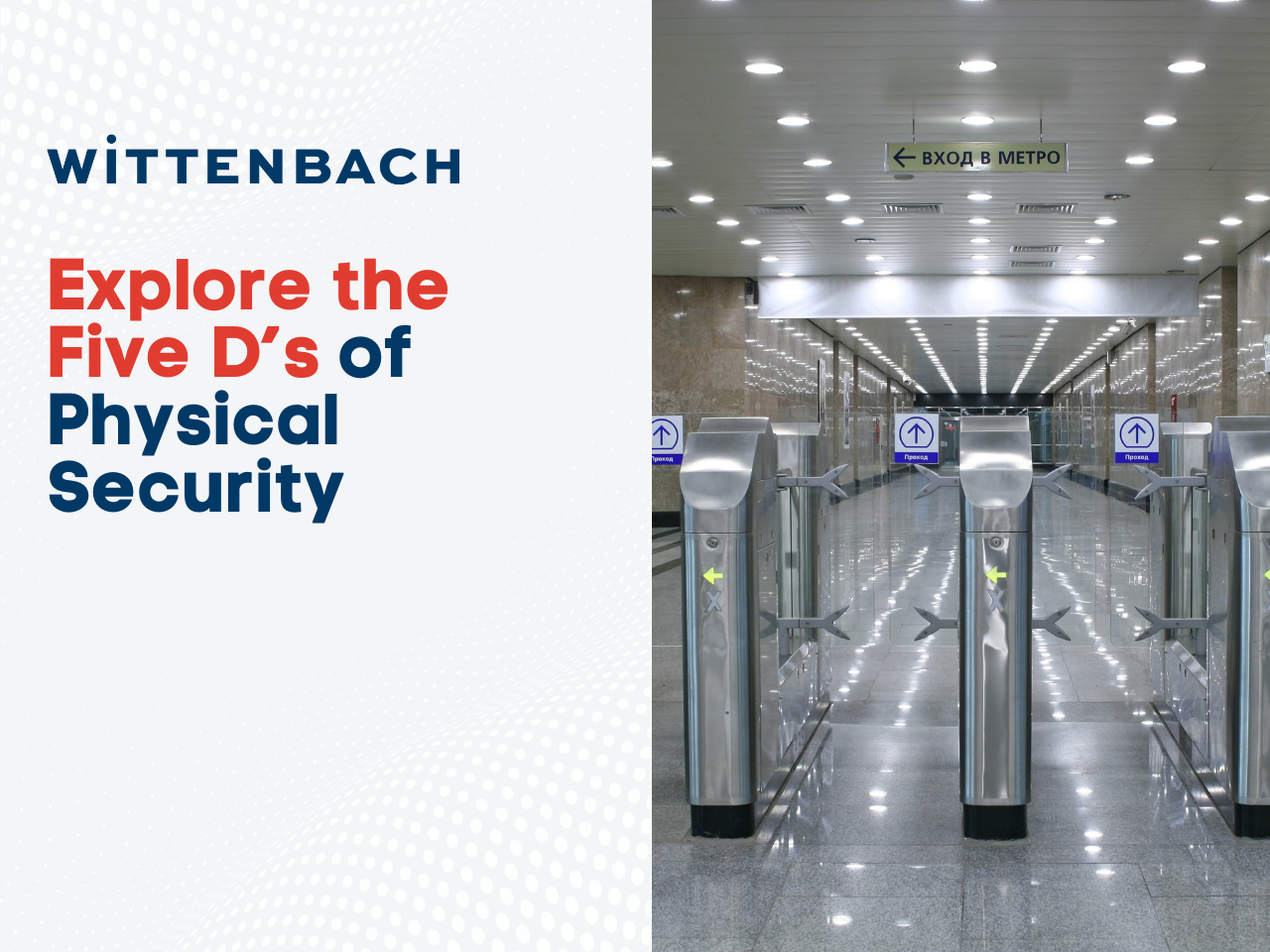When implementing a thorough physical security plan, the most important outcome is the security of your organization’s valuables against fire, flood, natural disasters, burglary, theft, vandalism and terrorism. This may sound overwhelming at first, but with the help of a thorough physical security assessment, your organization can determine which actions will best secure your employees, customers, assets, property and more.
In this feature, we will explore a proven process for you and your team to utilize that can provide the peace of mind that comes with having a robust physical security plan in place. To begin, we will outline what experts refer to as “The 5 D’s of Physical Security” as the foundation for performing a thorough Physical Security Assessment:
What Are the 5 D’s of Physical Security

Whether your organization has charged you with the responsibility to secure employees, customers, assets, property, data, software, hardware, or networks from physical harm or damage, understanding how to apply the five D’s of physical security will help you make a plan to bring you and your organization peace of mind.
The 5 D’s of Physical Security are:
- Deterring
- Detecting
- Denying
- Delaying
- Defending
These five actions, when reviewed as a collaborative exercise or in conjunction with an expert team, can help provide a framework to scrutinize your organization’s current physical security profile and can be used as the foundation of a Physical Security Assessment. A Physical Security Assessment is a process that can uncover opportunities to bolster existing actions, add on new features or even create a new plan, to ensure that your organization’s valuables are adequately protected.
Below we review each of the 5 D’s and how they can guide your team’s Physical Security Assessment:
Deterring

Gain a collaborative understanding of your current safety, security and wellness situation including: property perimeter, building access points, interior space, and building opening management. Define your perimeter. Security Magazine calls the perimeter “the farthest one from the location of the assets and is often a mix of physical infrastructure such as fences and lighting.”
The opportunity for your team in evaluating current and future needs for deterrence, will be to identify solutions that may integrate physical and electronic security tools, that can deter a criminal from attempting entry in the first place.
Security Magazine refers to deterrence as “a psychological battle”. When a robust security plan, including visible cameras, overt enclosures, fencing, turnstiles and obvious surveillance tools, are in place, nefarious activity can be stopped before it even starts.
Detecting
Outline how your locations currently track visits or customer traffic. Turnstiles are one method of security that can help control and manage foot traffic. Turnstiles can help your institution maintain an inviting appearance, while still regulating traffic and deterring unintended entry.
Denying

How do your current solutions deny access, while allowing team members or approved visitors to enter? Summarize and then explore what kinds of innovative building lifecycle services and tools that may enhance this process, including digital site surveys, and Building Information Modeling (BIM) design, to identify access points and set up solutions to deny access to any unwanted individual who tries to gain access. New products, including visitual verification tools, biometric or card access readers, can enhance and accelerate access point functionality.
Delaying
Are there current measures in place that add a time or delay component to access? The idea here is simple: make gaining entry more complicated so an intruder either gives up or gives your security team enough time to respond. For example, does your organization use multiple locking doors or other physical barriers prior to the main access point? Discuss how to improve the safety, security and wellness impact of these critical access points, including specific measures to keep unwanted visitors out.
Defending
Often referred to as the “defend perimeter,” this action plan includes the involvement of law enforcement and overlaps the other perimeters, to apprehend possible criminals. From here, your team can explore options to add on to whatever measures are currently in place. To do this, prepare a plan to address building security concerns before, during and after an unauthorized intruder has partially or fully overcome any access control measures.
Thought leaders refer to the five D’s as the ‘onion skin’ principle, whereby multiple layers of physical security plan work together to prevent access and as such, give your team the time and intelligence you need to respond effectively.
Achieving and maintaining the physical security of any property can be a moving target, as both new technology and new vulnerabilities evolve. Bearing in mind customer, asset, and employee security, outfitting your branch with the right products, services, and employee training can make a measurable difference.
Physical Security – One of Wittenbach’s Four Foundational Pillars

With physical security as one of Wittenbach’s four main foundational pillars and product lines, our expertise and practical experience runs deep. Our solutions and partnerships offer protection inside and outside your branch, controlling the flow of traffic and preventing loss from crime, unwelcome intruders and environmental disasters.
While our roots are in the financial sector, security is important in numerous highly sensitive or high-traffic settings: hospitals, schools and campuses, manufacturing facilities, government buildings, laboratories, pharmacies, and more. Below, we’ll outline the products and manufacturers that can best support your security efforts, as well as resources that can empower your employees in the event of an issue.
Wittenbach Physical Security Solutions
- Physical security controls examples include turnstiles. Our partner, Hamilton, offers a wide range of turnstiles, including tripod turnstiles and both full- and half-height turnstiles. If an intruder is spotted quickly, these physical security measures make it easier for security staff to contact law enforcement if needed.
- Vaults and Safes: These are arguably the most important protective devices in a financial institution. Vaults are typically installed prior to building construction, with reinforced concrete panels that are designed to withstand intruders, extreme weather conditions, fire, earthquakes, and even a nuclear attack. Safes can hold cash and other smaller valuables, while vaults store safe deposit boxes, sensitive documents, and other larger valuables. Our partner Hamilton’s modular vaults feature reinforced concrete that can be custom-tailored to your branch’s specifications. Additionally, all of their quality safes are made of UL-listed steel plating and can be customized for dimension and lock type.
- Lockers: A smaller locker unit can keep cash and small valuables secure, while also fitting into the aesthetic of your branch building. Hamilton offers lockers that can be configured with combination locks, electronic locks, or time-delay locks for optimal security. The manufacturer says, “Hamilton lockers provide the security and selection banks need for storing cash and coins. We can build just about any size, shape, or finish of a security locker. Choose from a wide range of predetermined modular sections that are available in your choice of solid steel painted or stainless steel clad doors. Even with Hamilton’s Modular Lockers, you can still select the type of lock and paint color.”
- Bullet-Resistant Glass: Bullet-resistant windows such as Hamilton’s Vision Series are made of maintenance-free stainless steel, are hurricane-rated in compliance with the Florida building code, and protect against a variety of entry threats. These window panels can also be easily integrated with the Hamilton transaction drawers or “deal drawers”, which allow for the secure exchange of cash and documents.
- Locks on deal drawers, safes, and safe deposit boxes are evolving rapidly. The dormakaba remote lock systems are swiftly becoming an FI standard. Remote codes assist with high turnover and cumbersome physical keys. For more information, watch the Wittenbach webinar here.
Now that you have both a broader and deeper understanding of Wittenbach’s physical security capabilities, contact us today to help plan your next project. Our experts can help you choose the right technology to protect your space, and install it even during working hours, simultaneously providing value and minimal disruption. Whether you need to reinforce the interior or exterior of your branch, our knowledge and partnerships provide the modernized security and peace of mind you’re seeking.
Wittenbach
Wittenbach provides world-class physical security, and electronic security solutions to financial institutions and retail establishments. We have been serving customers throughout the East Coast and MidWest since 1974.

